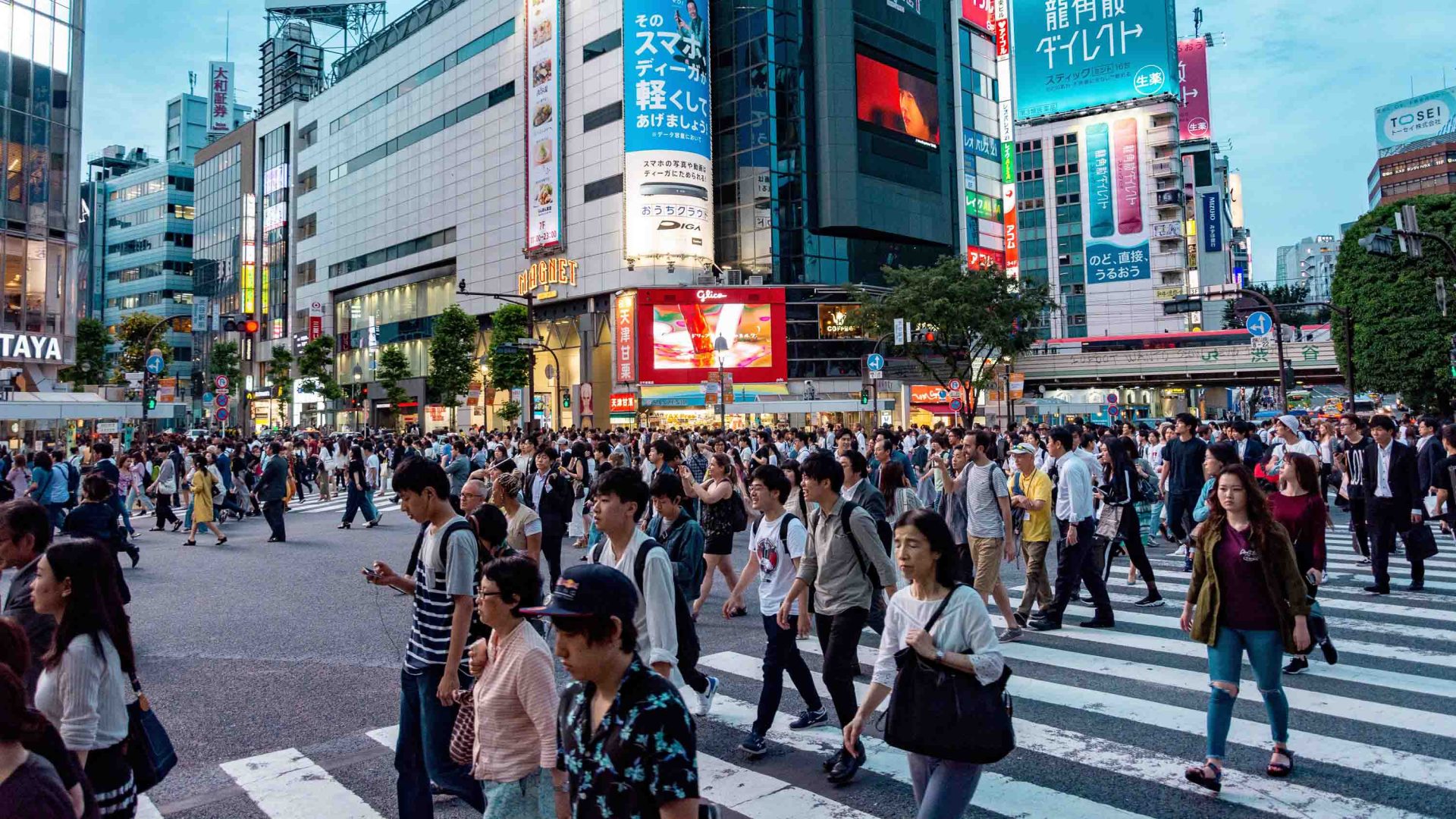
After being closed to tourism since the COVID-19 pandemic began, Japan has reopened its doors to visitors. Writer Bill Fink returns to his former home to find a new path to tourism enlightenment on newly-crowded streets.

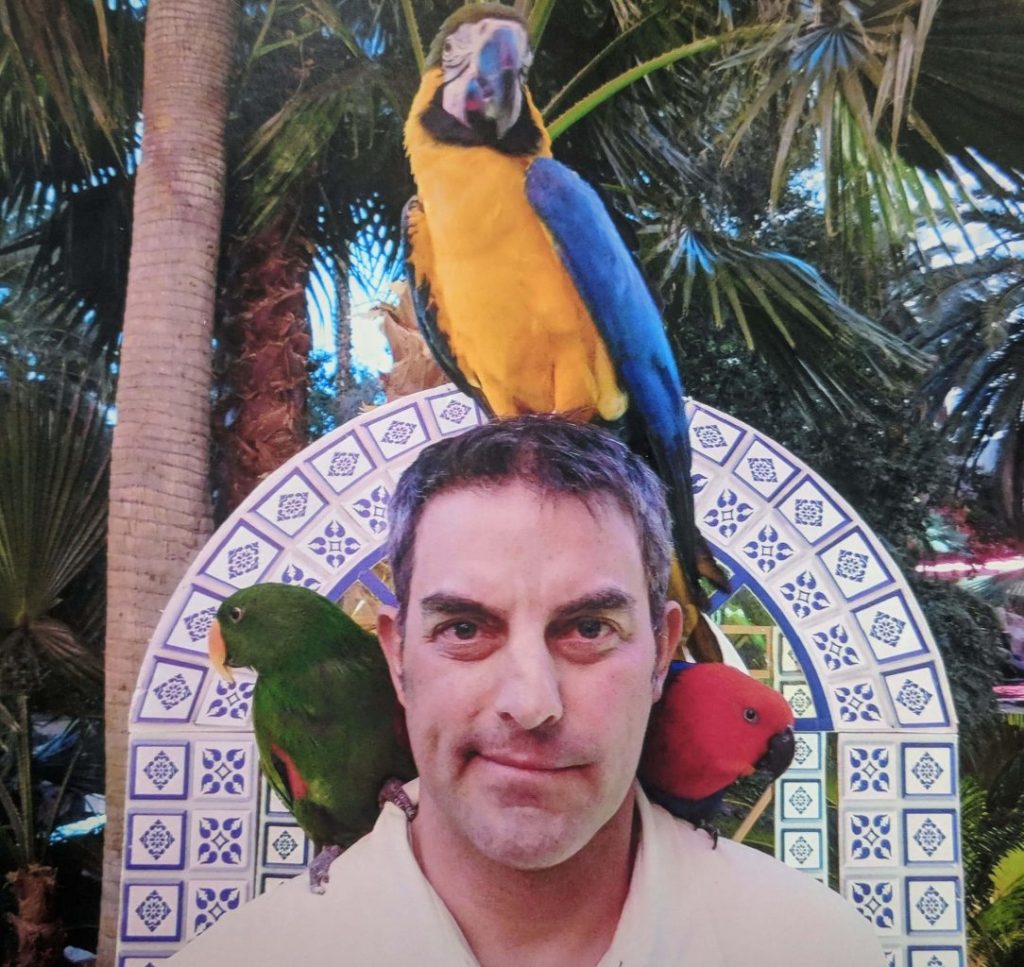
After being closed to tourism since the COVID-19 pandemic began, Japan has reopened its doors to visitors. Writer Bill Fink returns to his former home to find a new path to tourism enlightenment on newly-crowded streets.
In Japan’s historic capital city of Kyoto, near the tourist-thronged Zen rock gardens of Ryoan-ji, a tourist couple drags two large suitcases onto my packed public bus. “It looks like we’re back to 2019 again,” Manabu Higa, my Japanese guide, says, referring to the bustling popularity of the country as a destination before 2020, says. “Yay.”
I’m well enough versed in sarcasm to know that he was, in fact, not thrilled at all, despite his job depending on tourism. “It’s becoming just like 2019… for better or for worse,” he adds, shrugging his shoulders.
Japan recently reopened for independent tourists after a hiatus of more than two years. I traveled through the country shortly after the reopening both independently and as part of an organized tour, visiting some of the same areas I had toured while living in Japan as an exchange student 20 years ago, and on many subsequent travels to Japan since then.
I was curious how Japanese locals would welcome the sudden influx of post-pandemic visitors. Japan is a hot destination these days, with Intrepid Travel alone offering more than 200 trip departures in the coming year, along with many other companies jumping back into the tour business. That’s not counting the independent travelers who are also arriving in droves.
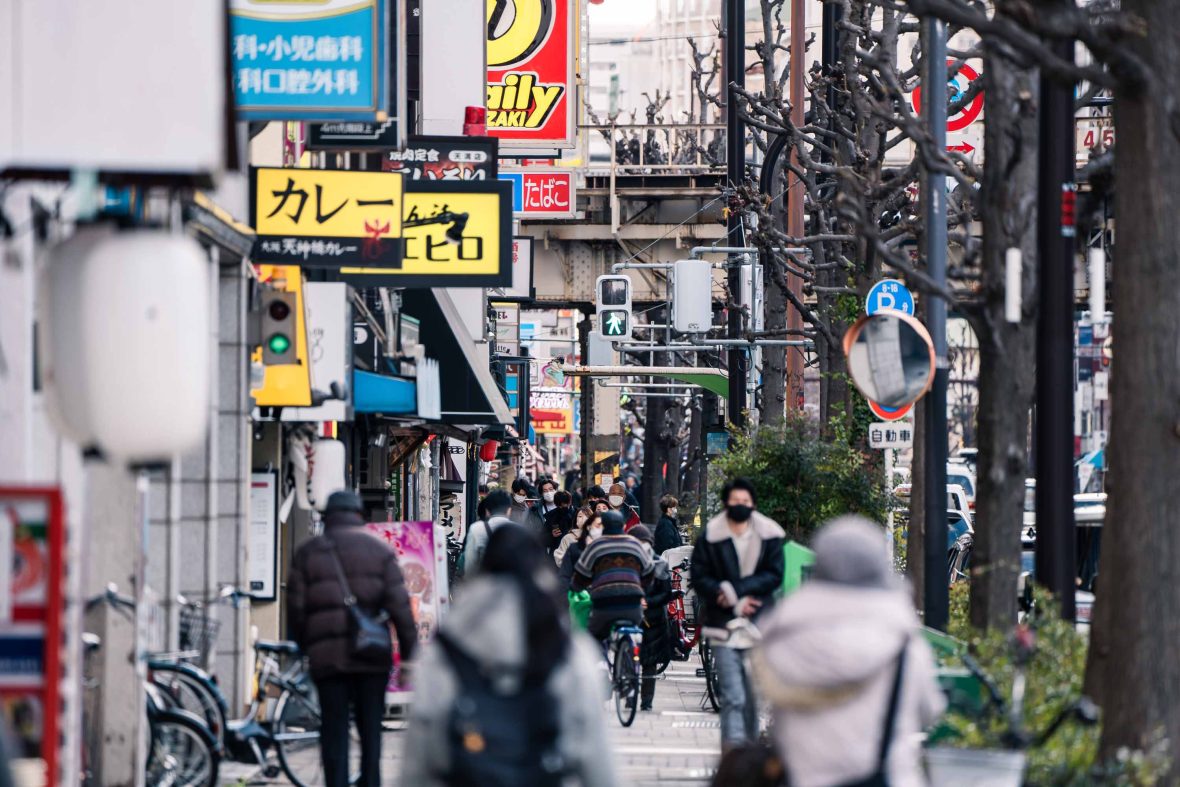
This historically insular country once mandated another visitor hiatus—lasting a full 220 years—forbidding almost all foreigners from the 1600s through much of the 1800s. While the Japanese can be phenomenally gracious and welcoming people (including the host family I lived with as an exchange student), I also often had the feeling in my visits that many residents would just as soon go back to the 18th century and exclude tourists from their lives altogether.
So it was with a little trepidation that I embarked on one of the early tours back to Japan with Intrepid Travel, wondering if locals would begrudge this reopening or be happy for the long overdue business and global interaction.
Some things have changed since the pandemic. Some things haven’t.
Train travel in Japan is as efficient as ever, maybe even better after having ramped up service to support remote workers during the pandemic. But locals, perhaps no longer accustomed to the chatter of foreign voices, shushed our group multiple times on trains and buses during our tour, holding a finger to lips, or saying “Please, quiet!” in halting English. We were shushed by train conductors and riders, as well as one bus passenger whose mortified teenage daughter sitting next to him slapped her dad’s leg in rebuke of his shushing.
My traveling group felt our conversations were at “normal” volume levels, simply chatting on a train already buzzing with the regular sounds of commuting: the clanking of tracks, the swooshing of the automatic doors, the sales pitch of the snack cart woman, as well as the incessant public service announcements. But we were breaking the convention of hushed conversations in this public area.
I sat next to one older Japanese couple on a bullet train ride between Tokyo and Kyoto who were eager to engage me in conversation once they discovered I spoke some Japanese. After sharing the story of their honeymoon to Hawaii many years ago, they asked me about mask-wearing in the United States, seemingly jealous of the lack of rules and social pressures there.
While the Japanese government never issued any mask mandate, societal norms have pressured people to wear masks and to keep on wearing them indefinitely, with nearly 100 percent of people on the streets of Japan still currently masked.
Across the country, similar warning signs are posted, as in certain neighborhoods of Kyoto with posters announcing, “Airbnb is not welcome here.”
Even recent government-televised public service announcements and multilingual signs saying it’s OK to take off your mask outdoors have not had any impact. I saw only a few construction workers and a very occasional Japanese salaryman walking without a mask—usually talking on their phone or smoking a cigarette.
“Of course, we will always wear a mask any time we catch a cold,” my new train buddy told me. I recalled from my prior visits many mask-wearing locals on trains, the considerate commuters not wanting to spread their germs when sick. “But,” he added, wagging his finger at me, “it would be nice to be comfortable to take off our masks when we are healthy. But no Japanese wants to be the first, you know? Maybe foreigners coming here will change thinking a little bit.”
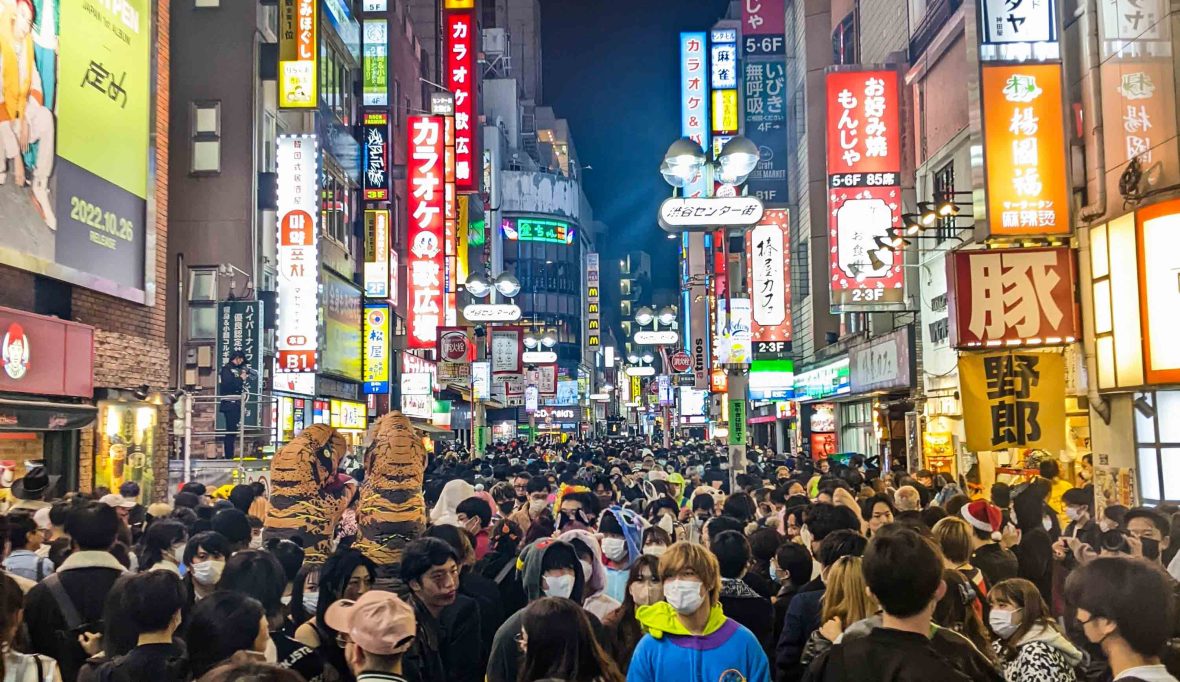
Maybe there is something to cultural shifts by way of tourists. Higa mentioned that it’s happened before. “It’s like when we Japanese see a foreigner at a street corner, we feel okay jaywalking because you do it all the time,” he laughs. “We Japanese love the American Wild West. I think in our heart we want to be cowboys.” He removed his mask with a flourish to join me in solidarity as we walked down an uncrowded street, almost jaywalking his way into a moving car.
Later that night, Kyoto’s riverside Pontocho entertainment district was rocking with the same raucous Wild West bar scene I remember from my college student days. It was the usual anything-goes frat party environment of excessive drunkenness and exuberant mingling, with hardly a mask in sight. In the streets, drunken locals and tourists alike staggered from bar to bar—this is the officially accepted area to let loose and be loud, no shushing to be heard here.
On Halloween night, I joined costumed masses of Mario Brothers and Sisters walking shoulder to shoulder with Jokers and Jurassic Parkers in the streets of the Shibuya district of Tokyo. We were minded by a phalanx of police trying to maintain order after the fatal street tragedy in Korea only days before.
Cops stationed every dozen feet shouted “Keep walking! No stopping!” on their megaphones to try to avoid bottlenecks, holding up barriers of police tape in intersections to prevent any jaywalkers. Foreigners made up a small, but noticeable, percentage of the crowd, and it seemed like good times had returned once again—just as long as everyone remained in their proper zone, and moved at the proper pace.
Popular tourist sites across Japan were mobbed during my visit, mostly with Japanese tourists—the government recently launched a domestic travel promotion program. Like Shibuya and the entertainment districts, the tourist sites also had a growing representation of foreign visitors. The popular destination of Kyoto’s Ninjo castle was staffed with masses of hall-monitor-type guards to make sure visitors walked along the officially designated paths and followed all the rules. One older woman guard in a purple jumpsuit walked up to me and casually shoved me back across a dotted line to keep me in my place.
While the tight Japanese crowds (and the guards) looked like they could have done without the foreign intruders, vendors at all the tourist locations were delighted to see us. “Doozo, Please—Welcome!” the fishmongers and snack-sellers of the Tsukiji street market neighborhood shouted at my group as we strolled the streets. We stopped for bites of skewered eel, slurps of giant oysters, and sips of small cups of local sake. “Oh, their eyes are lighting up when they see foreigners again,” says Lulu Assagaf, a local Intrepid Travel guide.
In a country with rigidly described and bounded paths, with tight rules governing behavior, taking the effort to get off this narrow beaten track—seemed to be doing myself and the tourism industry a favor
Even in the overtouristed historic village of Shirakawa-go, with its unique traditional A-frame homes high in the Japanese Alps, local businesses now seemed happy for the renewed influx of tourist trade. But signs around the village pointed to the strains that the system faced in the pre-pandemic era and will likely have to deal with in the future.
“We have removed the rubbish bins in Shirakawa. Please take home your trash with you.” A big ask in a country of overpackaged foods and gifts. Other signs ask visitors to keep off the village rice fields, not to enter driveways or any other restricted areas. Another sign posted a very specific request for visitors not to drop food skewers into toilets, apparently a recent problem. Across the country, similar warning signs are posted, as in certain neighborhoods of Kyoto with posters announcing, “Airbnb is not welcome here.”
As bus after bus disgorged groups of Japanese and some foreign tourists in Shirakawa, one can only wonder what will happen when the Chinese travel market returns, having made up 60 percent of tourism visitors to Japan in 2019, according to Kenny Onishi, Intrepid Travel’s general manager for Japan.
Sustainability and management of tourism in Japan may become a challenge, even for the infrastructure-focused Japanese government. I felt my Kyoto guide’s apprehension about a return to 2019 tourism levels as Shirakawa’s suspension bridge swayed with the weight of a couple hundred tourists walking on it.
The answer to Japanese over-tourism in the years ahead may be to spread the visitor impact to alternative destinations that are surprisingly near busy city spots.
In Kyoto, the UNESCO World Heritage recognized Ninna-ji temple, with its massive wooden gates, towering pagoda and chanting monks regularly attracts large crowds. It was packed during my visit, with visitors jostling one another for the perfect photo spot of the pagoda framed by fall foliage.
However, just behind Ninna-ji’s main temple, a small path led to a trail: the “Omuro 88.” This hiking trail passes 88 small wooden temples set amidst cedar forests, rocky pathways and spectacular views overlooking Kyoto.
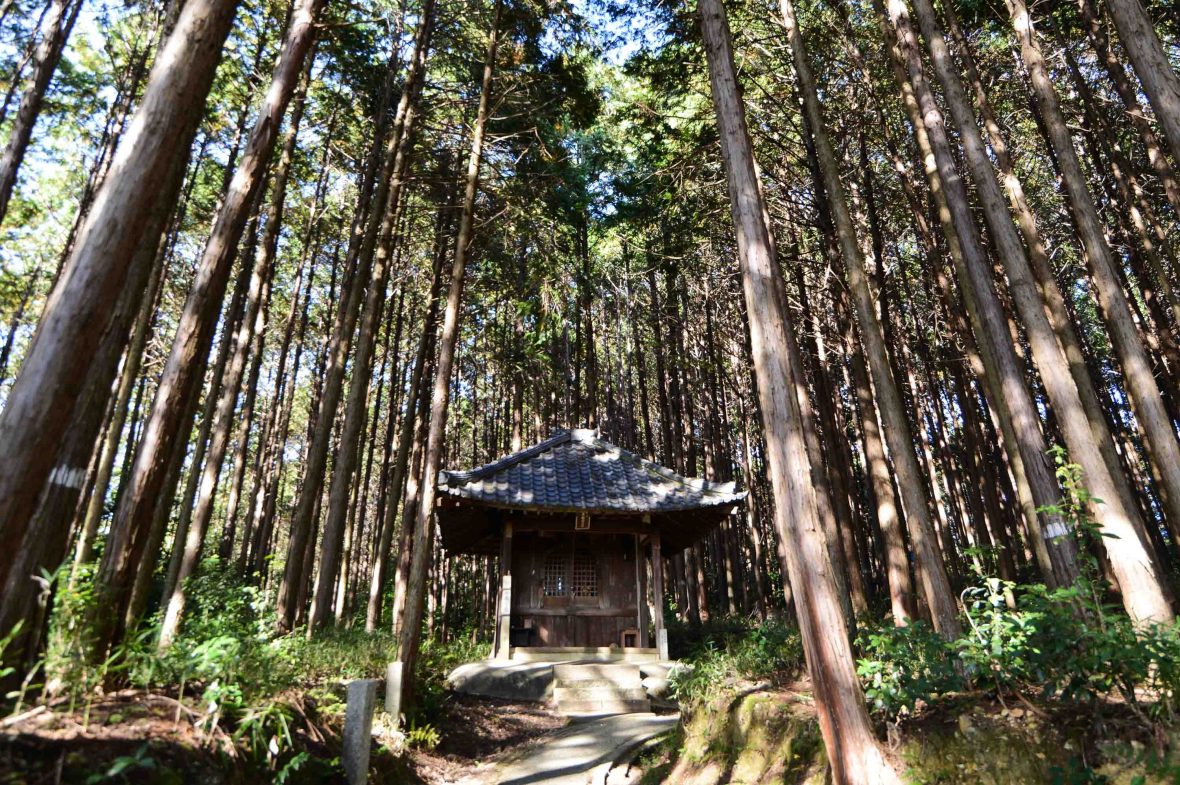
Because the trail is little known on the main tourist circuit, I saw barely a handful of people on my hours hiking it—just a few small neighborhood kids goofing around, a dog walker and an older man doing deep knee bends near the summit.
Manabu Higa, a self-described “half-baked monk” who dropped out of his Buddhist training path for a career in academia and tourism, brought me to the trail and translated the many mantras along it. Higa says Japan is covered with hundreds of similarly secluded trails even near Kyoto, Tokyo and other major cities that few people—local or visitor—make the effort to find.
Along the Omuro 88, I discovered my own literal path to tourism enlightenment, albeit perhaps not in the Buddhist spiritual sense the temple founders intended. In a country with rigidly described and bounded paths, with tight rules governing behavior, taking the effort to get off this narrow beaten track—seemed to be doing myself and the tourism industry a favor by spreading the impact to the country. It may take a bit more effort, but the rewards of peaceful discoveries provide a sort of tourism nirvana.
And best of all, when I got to the secluded summit, I could shout to my heart’s content with nobody around to shush me.
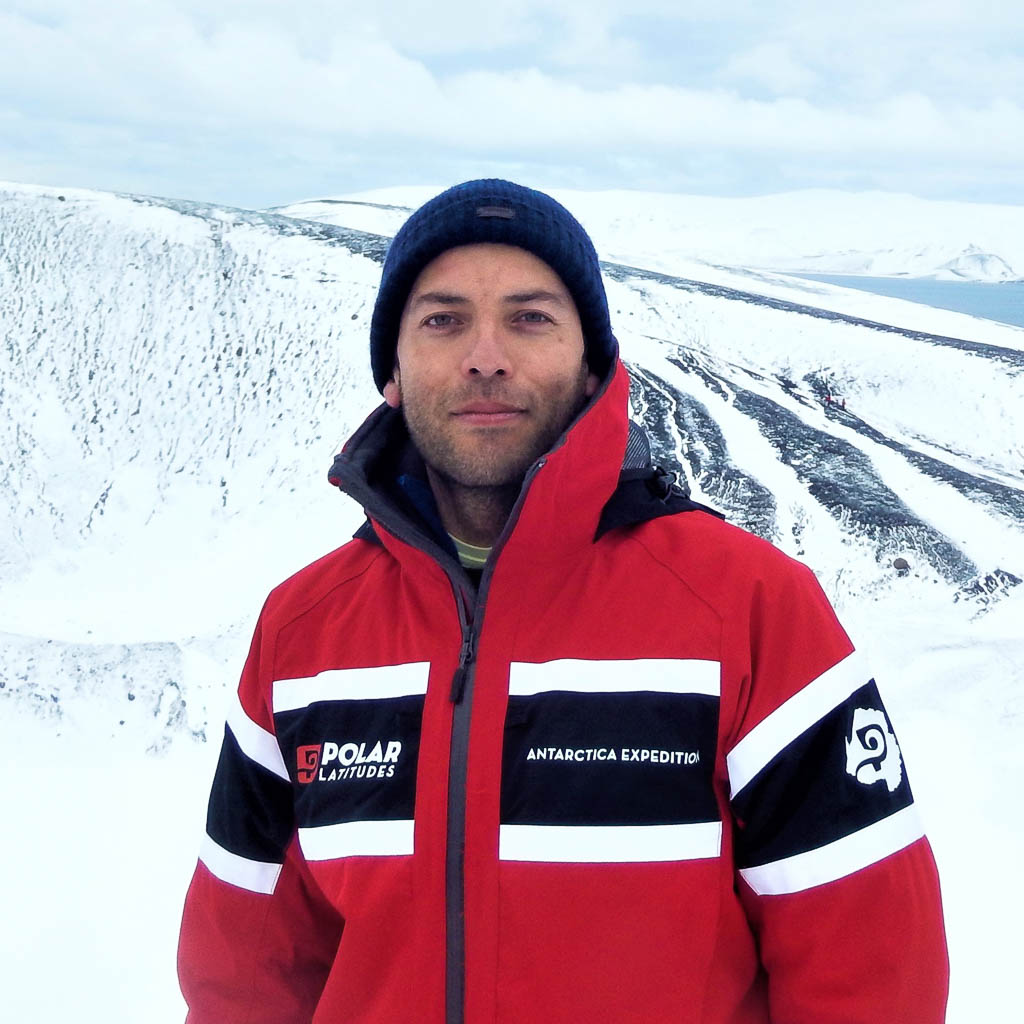

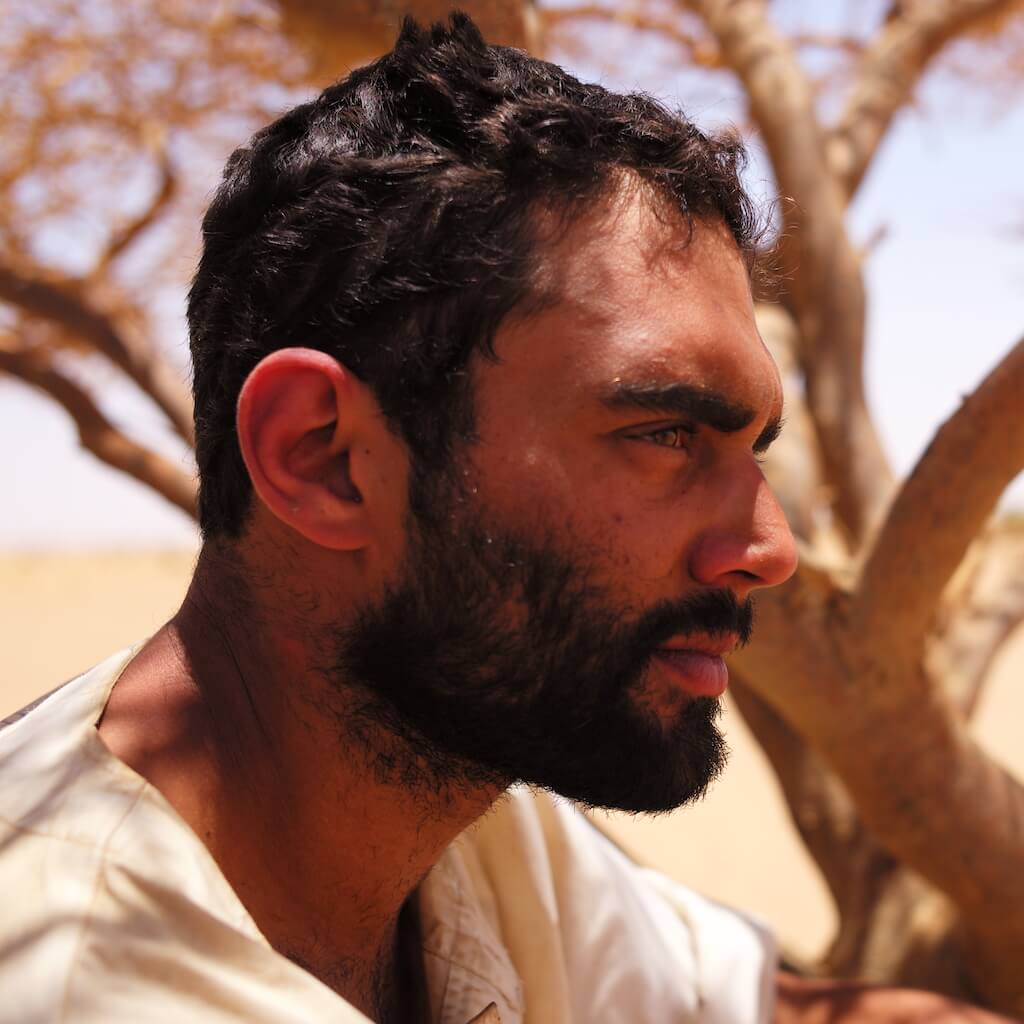



Can't find what you're looking for? Try using these tags: